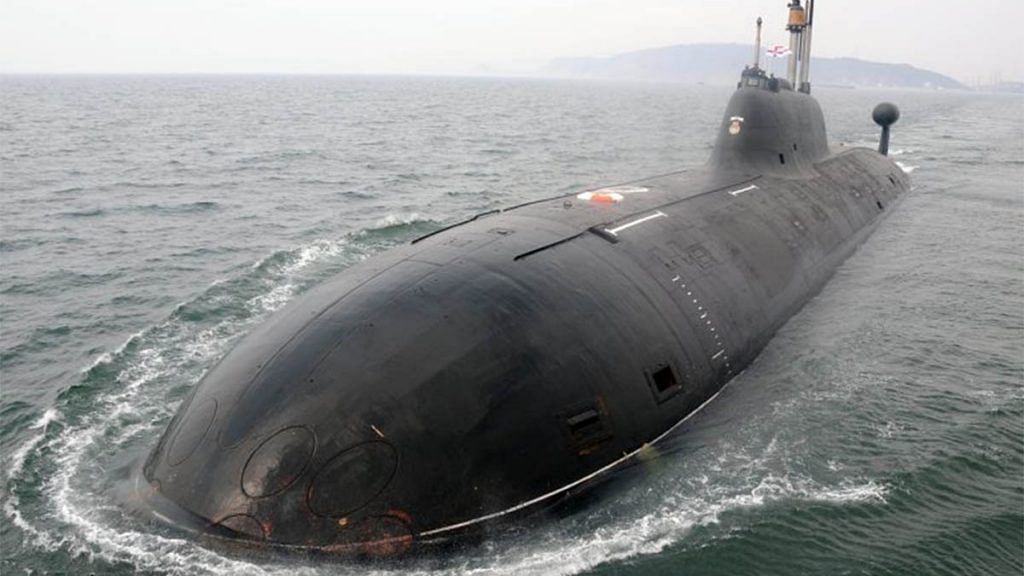Moscow: As India’s ambitious plan to build six next generation conventional submarines remains stuck, Russia Monday said that without “drastic changes” in the Indian Navy’s tender for Project 75 India (P75I), the programme will not succeed.
Russia also pointed out that no Naval force in the world has the kind of submarines that India is seeking and hence the vessels have to be designed and built from the beginning.
“The Swedish were the first one to pull out of the project. Then Germany and now France. We are also not participating,” Andrey Baranov, deputy director general, Foreign Economic Activities at the Rubin Design Bureau, Russia’s state-owned submarine designers, said while responding to a query by ThePrint.
Baranov was speaking at the Army 2022, a defence exhibition being held in Moscow.
As reported by ThePrint earlier, the P75I, which is being pursued under “Strategic Partnership” – to be built in India through a collaboration between a foreign Original Equipment Manufacturer (OEM) and an Indian entity – remains in limbo because multiple foreign companies have chosen to stay away.
The OEMs in contention were Russia’s Rosoboronexport Rubin Design Bureau, Germany’s ThyssenKrupp Marine Systems, France’s Naval Group, Spain’s Navantia, South Korea’s Daewoo Shipbuilding & Marine Engineering and Swedish firm SAAB.
SAAB was the first to exit from the race in 2019, even before a formal tender was issued, citing “unbalance” in strategic partnership.
Also read: Army looks to reduce troops by 2 lakh, deployment in Kashmir could be rejigged
‘No naval force has such submarines’
Baranov said his bureau had first received papers from India for the P75I project in 2008.
“You see, how many years have passed since the last version of RFP (Request for Proposal) was issued. So we think a whole book can be written about Russian participation in P75I,” he said.
Baranov said Russia’s major concern was that the requirements specified by the Indian Navy and the timelines for the same do not match.
“The Indian Navy wants to have a state-of-art submarine with AIP (Air Independent Propulsion), with powerful missiles, weapons, and very high stealth. None of the world navies have a prototype of similar submarines. We are talking about development of an absolutely new product,” he said.
Underlining that the Rubin Design Bureau has been designing ships and submarines for 120 years, Baranov said the biggest challenge always is making the first ship. He also said such challenges are part of the natural process for development of complicated systems and building the first ship under P75I will take time.
“But the requirements stated in the RFP (request for proposal) demand a very strict time period. And a lot of responsibility is assigned to the designer. At the same time, the designer has no influence on the construction process that will happen in India,” he said.
Baranov added, “The key requirement (in the RFP) is that submarines have to be constructed in India. If timelines are not met, the penalty is very high. From the very beginning we have been saying it is not possible to make the first submarine in such a short time. This concern was not considered and an RFP was issued. And hence Russia informed the Indian Navy about its unwillingness to participate.”
The senior Russian defence official also said these are not just Russian concerns but expressed by the French, Germans and the Swedes also.
It is learnt that the Indian Navy wants the first submarine to be delivered within five years of the signing of the contract, which will be implemented through a strategic partnership.
“So as a design, the submarine idea was very good but the idea of implementation under Make in India was not good. So that is why nothing happens right now. And I think without any drastic changes in the process, nothing will happen,” he said.
‘Many systems not tested in India yet’
The senior Russian defence official said many of the systems that India wants to integrate with the submarines, such as AIPs, propulsion motors and others have not been manufactured or tested in India yet.
Such was the poor response to the RFP issued that the Indian Navy went ahead and extended the date for submission of bids to the end of December this year, from the already extended date of June end.
The foreign companies have sought tweaking of the strategic partnership as well as removal of the clause for an in-service AIP system. The Navy’s ambitious 30-year submarine plan has been stuck and way off the target.
Under the ambitious 30-year-old plan that ends in 2030, India was to build 24 submarines — 18 conventional and six nuclear-powered submarines (SSNs) — as an effective deterrent against China and Pakistan.
(This reporter is in Russia as a guest of United Aircraft Corporation.)
Also read: India and China Air Forces hold maiden talks in Ladakh as LAC tension escalates to sky
